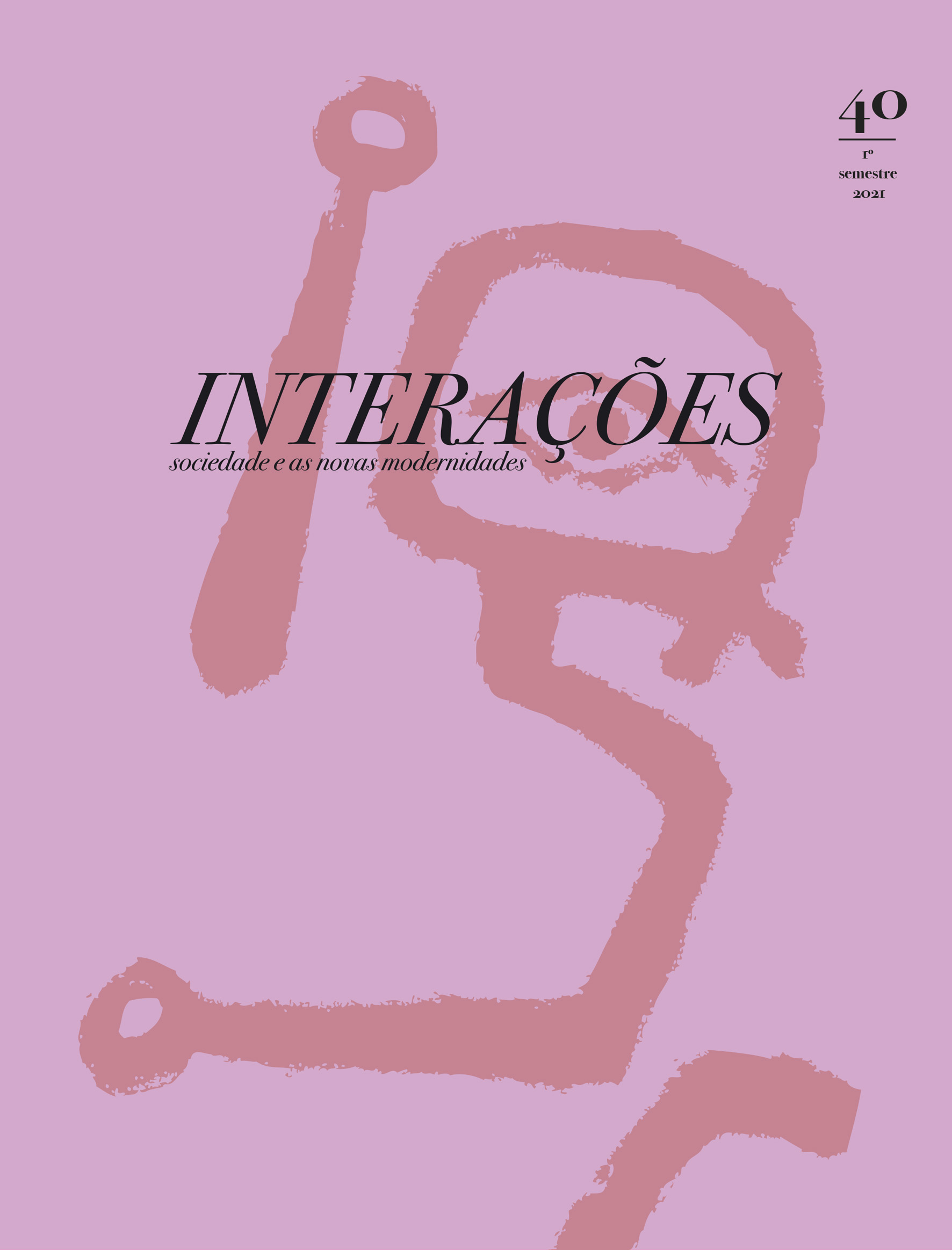In a War with the Virus: Science, People and Politics
DOI:
https://doi.org/10.31211/interacoes.n40.2021.e1Keywords:
Vaccine-hesitancy, Inequality in immunization access, Pandemic behaviours, Social & behaviour-changeAbstract
The world, attacked by a malicious virus in the last quarter of the year 2019 termed it as SARS-CoV-2 (WHO) and manifestation of the “disease" caused due to this virus was dubbed as COVID-19. Transmitting through respiratory-tract, it has already impacted millions of people, with a high mortality in vulnerable age groups.
It is reckoned that the outbreak of COVID-19 pandemic is a major public health concern with equally dire health consequences with critical environmental and economic impacts. Scientific community developed multiple vaccines and repurposed drugs for the COVID-19; however, the vaccination against this pathogen still throws a huge challenge of low uptake across the world. There are two dimensions to COVID-19 vaccination programme, i.e. ensuring equitable access and the positive behaviour change marketing strategies.
People acknowledge that this pandemic is primarily a "behavioural practices" issue, including at community levels. The outrage of the "infodemic" (spread of misinformation) is gaining currency especially through social media and digital space.
The technical area of health communication has assumed a high-level of tilted “political communication" in many countries. It is, therefore, time to witness more of science in politics than politics in science.
The article includes a key informant interview with a former WHO expert.
Downloads
References
Gautam, S., & Trivedi, U. (2020). Global implications of bio-aerosol in pandemic. Environment, Development and Sustainability, 22, 3861-3865. https://doi.org/10.1007/s10668-020-00704-2
Gupta, D., Hassan, B., Agarwal, A., & Bhasin, A. (2019). Immunization Campaigns: Mitigating Barriers - Designing Communication. Interações: Sociedade e as novas modernidades, (36), 158-175. https://10.31211/interacoes.n36.2019.e2
Gupta, D., Jai, P. N., & Yadav, J. S. (2021). Strategic Communication in Health and Development: Concepts, Applications and Programming (SAGE). Journal of Health Management, 23(1), 95–108. https://doi.org/10.1177/0972063421994943
Hedlund, J. (2000). Risky business: safety regulations, risks compensation, and individual behavior. Inj Prev. 6, 82-90. [PMID: 10875661]. https://doi.org/10.1136/ip.6.2.82
Kim, D. S., Rowland-Jones, S., & Gea-Mallorquí, E. (2020). Will SARS-CoV-2 infection elicit long-lasting protective or sterilising immunity? Implications for vaccine strategies (2020). Front Immunol. 11(571481). [PMID: 33362759] https://doi.org/10.3389/fimmu.2020.571481
Kim, J. H., Marks, F., & Clemens, J. D. (2021). Looking beyond COVID-19 vaccine phase 3 trials. Nat Med. 27, 205-211. [PMID: 33469205]. https://doi.org/10.1038/s41591-021-01230-y
Liu, C., Zhou, Q., Li, Y., Garner, L. V., Watkins, S. P., Carter, L. J., Smoot, J., Gregg, A. C., Daniels, A. D., Jervey, S., & Albaiu, D. (2020). Research and Development on Therapeutic Agents and Vaccines for COVID-19 and Related Human Coronavirus Diseases. ACS Cent. Sci. 6(3), 315-331 https://doi.org/10.1021/acscentsci.0c00272
Renn O., & Levine D. (1991). Credibility and trust in risk communication. In: R. E. Kasperson, & P.J.M. Stallen (eds), Communicating Risks to the Public. Technology, Risk, and Society (An International Series in Risk Analysis), 4. https://doi.org/10.1007/978-94-009-1952-5_10
Richardson, P., Griffin, I., Tucker, C., Smith, D., Oechsle, O., Phelan, A., & Stebbing, J. (2020). Baricitinib as potential treatment for 2019- nCoV acute respiratory disease. Lancet, 395(10223), e30-e31. https://doi.org/10.1016/S0140-6736(20)30304-4
Sarkodie, S. A., & Owusu, P. A. (2020). Global assessment of environment, health and economic impact of the novel coronavirus (COVID-19), Environment, Development and Sustainability, 23, 5005-5015. https://doi.org/10.1007/s10668-020-00801-2
Downloads
Published
How to Cite
Issue
Section
License
Copyright (c) 2021 Deepak Gupta

This work is licensed under a Creative Commons Attribution-NonCommercial 4.0 International License.
The copyright of published works is retained by the author who grants Interações the original publication right. The published article can be used freely for educational, non-commercial purposes, in accordance with the Creative Commons License - Attribution-Non-Commercial 4.0 International, provided that the author, the title of the article, the title and number of the journal are cited together with the URL or DOI of the article.



